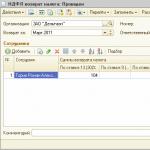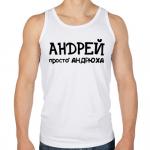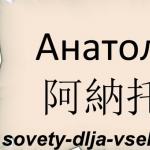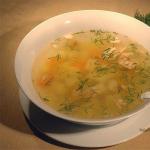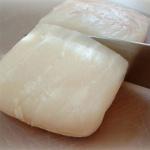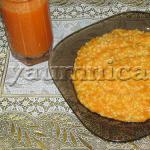Our land is great and rich in various minerals!
In schools, from the very beginning of studying a subject such as geography, children are explained what wealth is extracted from the bowels of the earth. Children will learn in which part of the world certain natural resources can be found. A map with mineral symbols helps them with this.
The riches of our land
On a geographical map, topographers apply special symbols and signs indicating what exactly is located in a particular place. For example, forests are indicated as trees or in the form of a green rectangle, seas - in the form of a blue rectangle, sandy terrain - in yellow, and so on.
The earth is rich in such minerals as oil, gas, coal, peat, black ore, non-ferrous ore, lime, clay, sand, granite, precious stones (ruby, diamond, sapphire, emerald), fresh water, mineral water and so on. Thanks to topographers, people find out in which area gas or oil is produced, and much more.
According to the designations of mineral resources on the map of Russia, it is rich in oil and gas (Tyumen, Tomsk, Novosibirsk, Perm, Orenburg regions, the Republic of Tatarstan, Bashkortostan and so on), coal (Pechora, Kuznetsk, South Yakutsk basins), oil shale (St. -Petersburg deposit), peat (Northern Urals, Western Siberia), iron ores (Kursk), copper (Norilsk) and much more.
Students learn how minerals are mined, how they are cultivated, and how they need to be protected.
Symbols of mineral resources on the map
Each fossil has its own designation. Let's look at the most common ones:
- Coal is designated in the shape of a black square. Brown coal is a white square with diagonal black stripes. Oil shale is a black parallelogram. Oil is a black elongated trapezoid, similar to a triangle. Gas is the same symbol as oil, only white. Iron ore is a black triangle. Aluminum ores - a white circle inside a black square. Copper - black rectangle. Gold is a black and white circle, colored in half. Table salt - white cube.

Knowing what a particular symbol means, you can easily decipher any card.
Our land is great and rich in various minerals!
In schools, from the very beginning of studying a subject such as geography, children are explained what wealth is extracted from the bowels of the earth. Children will learn in which part of the world certain natural resources can be found. A map with mineral symbols helps them with this.
The riches of our land
On a geographical map, topographers apply special symbols and signs indicating what exactly is located in a particular place. For example, forests are indicated as trees or in the form of a green rectangle, seas - in the form of a blue rectangle, sandy terrain - in yellow, and so on.
The earth is rich in such minerals as oil, gas, coal, peat, black ore, non-ferrous ore, lime, clay, sand, granite, precious stones (ruby, diamond, sapphire, emerald), fresh water, mineral water and so on. Thanks to topographers, people find out in which area gas or oil is produced, and much more.
According to the designations of mineral resources on the map of Russia, it is rich in oil and gas (Tyumen, Tomsk, Novosibirsk, Perm, Orenburg regions, the Republic of Tatarstan, Bashkortostan and so on), coal (Pechora, Kuznetsk, South Yakutsk basins), oil shale (St. -Petersburg deposit), peat (Northern Urals, Western Siberia), iron ores (Kursk), copper (Norilsk) and much more.
Students learn how minerals are mined, how they are cultivated, and how they need to be protected.
Symbols of mineral resources on the map
Each fossil has its own designation. Let's look at the most common ones:
- Coal is designated in the shape of a black square. Brown coal is a white square with diagonal black stripes. Oil shale is a black parallelogram. Oil is a black elongated trapezoid, similar to a triangle. Gas is the same symbol as oil, only white. Iron ore is a black triangle. Aluminum ores - a white circle inside a black square. Copper - black rectangle. Gold is a black and white circle, colored in half. Table salt - white cube.

Knowing what a particular symbol means, you can easily decipher any card.
In this article we will get acquainted with the image (picture) “Symbol of peat on a physical map.”
Symbol of peat on a physical map. Peat is a combustible mineral formed by the accumulation of plant remains that have undergone incomplete decomposition in swamp conditions. Peat soil and peat humus are used in gardening as a natural fertilizer. Peat and soils containing it serve as a natural filter for natural water, effectively absorbing heavy metals and other impurities. This mineral resource is indicated on the physical map (outline map) by a symbol in the form of three open bricks.
Peat: symbols of minerals on the physical map and contour map from the site. How is peat indicated on a geographical map (symbol). Symbols of mineral resources: peat on the map. Free SVG vector icons and images of Extracurricular..ru).
Useful information on the topic “Symbol of peat on a physical map”:
- Fact 1.
- Fact 2.
Tags on the topic "Peat".
- How is peat indicated on a geographical map (symbol).
- Peat: a symbol for a mineral resource.
- Peat on the physical map and contour map.
- Conventional images of minerals and symbols.
- Symbols of mineral resources: peat on the map.
- Vector images of natural (mineral) resources.
- Peat as a mineral in the form of an icon.
- Peat (sign on a geographical map, symbol).
Peat (image for activities and lessons).
Every year, a huge number of different minerals and rocks are extracted from the bowels of the Earth, which are subsequently used in a wide variety of industries. Thus, gasoline is made from oil, our homes are heated with gas, magnificent sculptures and fountains are made from granite and marble. In this article we will talk about the symbols of minerals that are used in drawing up maps. And we'll show you what they look like.
Minerals and their types
Minerals are mineral formations with certain physical and chemical properties that allow them to be effectively used in the field of material production. In the thickness of the earth's crust they occur in the form of lenses, layers or placers. Sometimes they are concentrated in a small area, forming provinces or basins.
According to their state of aggregation, minerals are solid, liquid or gaseous, and according to their origin - organic or inorganic. They are also divided into three large groups:
- Ore (or metal): gold, silver, platinum, titanium, nickel, uranium, iron ore.
- Non-metallic (or non-metallic): granite, marble, kaolin, graphite, limestone, sand.
- Fuel (or combustible): oil, peat, coal, natural gas, crystalline hydrates.
The quality of a mineral resource is determined by its physical (density, color, moisture), chemical (oxidizability, radioactivity), mechanical (hardness) properties, as well as particle size distribution. Mining began in the Paleolithic era. Today, the most intensively extracted resources from the earth's interior include oil, gas, coal, phosphorites and non-ferrous metal ores.
Below you can see what the most famous symbols look like (iron ore, coal, gas, oil, peat). How are deposits of other minerals indicated on geographical maps? This will be discussed further.
Symbols of mineral resources
On geological, physical and economic maps you can find special graphical deposits of mineral resources. They are generally accepted and have one type (see photo below). In most cases, symbols of minerals are represented by simple or complex geometric shapes. Sometimes they resemble the outlines of the minerals they represent. For example, the symbol for peat is similar to briquettes of this fuel stacked on top of each other.

Sometimes ordinary colored circles are used as symbols on maps (usually ore maps). Inside each of them, the Latin designation of a particular metal is indicated (for example, Fe - iron, Pb - lead, Zn - zinc, etc.). See an example of such a map below. It was taken from the Soviet geological encyclopedia, published in 1984-1990.

In addition, there is a certain GOST (No. 2.857-75), approved back in 1979. It developed its own color system for symbolizing minerals, which is used exclusively in mining. So, for example, in this GOST they are indicated by a purple tint, copper - green, but mercury - red.
Combustible minerals
Fuel resources are usually displayed on maps with black symbols. Let's find out what the most common ones look like:
- Coal is a shaded equilateral square.
- Brown coal is a square with diagonal hatching.
- Oil is an isosceles shaded triangle.
- Gas is an isosceles empty triangle.
- Oil shale is a shaded parallelogram.
- Peat is a pyramid of three rectangles.
Interestingly, the symbol for oil is very reminiscent of a real oil rig.

Ore minerals
Deposits of ferrous ores are often indicated on geographical maps with red symbols. Let's find out what type the most common ones are:
- Iron ore is a filled equilateral triangle.
- Manganese ore is a sign that resembles a crown with two prongs.
- Titan is a diamond with the left half filled in.
- Molybdenum is a rhombus with a square inside.
- Tungsten is an empty square.
- Aluminum is a square with a circle inside.
- Copper is a filled rectangle.
- Mercury is an empty circle.
- Gold is a circle with the left half filled in.
Non-metallic minerals
Non-metallic mineral resources (including various construction raw materials) are often (but not always) shown on maps with green symbols. This is what some of them look like:
- Asbestos is a simple cross.
- Mica is a square crossed diagonally.
- Potassium salt is a cube with painted top and side faces.
- Rock salt is a cube with unpainted edges.
- Glauber's salt is an inverted T-shaped sign.
- Sulfur is an equilateral triangle with the left half shaded.
- Quartz is a diamond with the right half shaded.
- Limestone is a square intersected along both diagonals.
- Phosphorites are a filled circle with a vertical slot.
An interesting fact: the symbol for graphite resembles in its outline a pencil, which, as you know, uses a graphite rod.

Finally
Now you know what mineral symbols look like on maps. The most common ones should be memorized by every educated person. These are primarily icons for oil, natural gas, iron ore, coal and peat. But it will also not be superfluous to know what the designations of other mineral resources look like.
Conventional signs There are contour, linear and non-scale.
- Contour(area) signs lakes are shown, for example;
- Linear signs - rivers, roads, canals.
- Off-scale signs For example, wells and springs are marked on plans, and settlements, volcanoes, and waterfalls are marked on geographic maps.
Rice. 1. Examples of off-scale, linear and areal symbols

Rice. Basic symbols
Rice. Conventional signs of the area
Isolines
There is a separate category of symbols - isolines, i.e. lines connecting points with the same values of the depicted phenomena (Fig. 2). Lines of equal atmospheric pressure are called isobars, lines of equal air temperature - isotherms, lines of equal heights of the earth's surface - isohypses or horizontals.

Rice. 2. Examples of isolines
Mapping methods
To depict geographical phenomena on maps, various ways .By way of habitats show areas of distribution of natural or social phenomena, for example animals, plants, and some minerals. Traffic signs used to show sea currents, winds, and traffic flows. High-quality background show, for example, states on a political map, and quantitative background - division of a territory according to any quantitative indicator (Fig. 3).

Rice. 3. Cartographic methods: a - method of areas; b - traffic signs; c - method of high-quality background; d - quantitative background - dotted signs
To show the average magnitude of a phenomenon in any territory, it is most advisable to use the principle of equal intervals. One way to get the interval is to divide the difference between the largest and smallest indicator by five. For example, if the largest indicator is 100, the smallest is 25, the difference between them is 75, its 1/5 is -15, then the intervals will be: 25-40, 40-55, 55-70, 70-85 and 85-100 . When showing these intervals on a map, a lighter background or sparse shading depicts less intensity of the phenomenon, darker tones and dense shading depict greater intensity. This method of cartographic representation is called cartogram(Fig. 4).

Rice. 4. Examples of cartograms and map diagrams
To the method map diagrams are used to show the total magnitude of a phenomenon in a particular territory, for example, electricity production, the number of school students, fresh water reserves, the degree of arable land, etc. Map diagram called a simplified map that does not have a degree network.
Relief depiction on plans and maps
On maps and plans, the relief is shown using contour lines and elevation marks.
Horizontals, as you already know, these are lines on a plan or map connecting points on the earth’s surface that have the same height above the ocean level (absolute height) or above the level taken as a reference point (relative height).

Rice. 5. Image of the relief with horizontal lines
In order to depict a hill on a plan, you need to define it relative height, which shows how vertically one point on the earth’s surface is higher than another (Fig. 7).

Rice. 6. Image of a hill on a plane

Rice. 7. Determination of relative height
The relative height can be determined using a level. Level(from fr. niveau- level, level) - a device for determining the difference in height between several points. The device, usually mounted on a tripod, is equipped with a telescope adapted for rotation in a horizontal plane and a sensitive level.
Conduct hill leveling - this means taking measurements of its western, southern, eastern and northern slopes from the bottom to the top using a level and driving in pegs in the places where the level was installed (Fig. 8). Thus, four pegs will be driven in at the bottom of the hill, four at a height of 1 m from the ground if the height of the level is 1 m, etc. The last peg is driven in at the top of the hill. After this, the position of all the pegs is plotted on the area plan and a smooth line connects first all points that have a relative height of 1 m, then 2 m, etc.

Rice. 8. Leveling a hill
Please note: if the slope is steep, the horizontal lines on the plan will be located close to each other, but if it is gentle, they will be far from each other.
Small lines drawn perpendicular to the horizontal lines are berg strokes. They show in which direction the slope goes down.
Horizontal lines on the plans depict not only hills, but also depressions. In this case, the berg strokes are turned inward (Fig. 9).

Rice. 9. Depiction of various relief forms by horizontal lines
Steep slopes of cliffs or ravines are indicated on maps by small teeth.
The height of a point above mean ocean level is called absolute height. In Russia, all absolute heights are calculated from the level of the Baltic Sea. Thus, the territory of St. Petersburg is located above the water level in the Baltic Sea by an average of 3 m, the territory of Moscow - by 120 m, and the city of Astrakhan is below this level by 26 m. Elevation marks on geographical maps indicate the absolute height of the points.
On a physical map, the relief is depicted using layer-by-layer coloring, that is, with colors of different intensities. For example, areas with a height from 0 to 200 m are painted green. At the bottom of the map there is a table from which you can see which color corresponds to which height. This table is called height scale.



